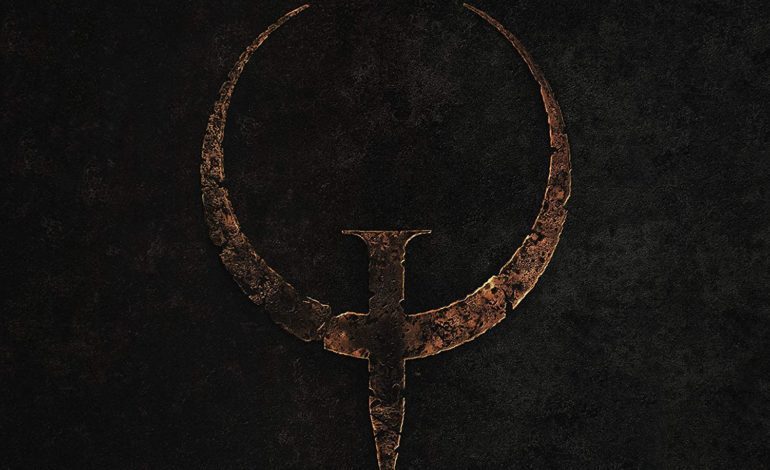

What year did this come out again?
Some things exist outside of time. Certain works of art remain treasured even as other works of art technically surpass them. Art that exists outside of time can be broken down into two categories: art that informs future artworks by its very existence and proficiency, and art that is so far beyond the realm of conceivability that nothing attempts to imitate it. Of these two distinct and equally lauded categories, Nine Inch Nails’ Quake soundtrack sits squarely in the latter camp.
In the earliest moments of the project, people can’t help but to be overwhelmed by the darkness. The opening track, creatively titled “Quake Theme,” screams to life with electric guitars and static. Bold and assertive, it quickly becomes clear that this was the most accessible song NIN put on the soundtrack. Moving into tracks like “Aftermath” and “It Is Raped,” the sound palate shifts towards extreme menace. Yes, the looping patterns and slow progressions do occasionally remind listeners that they’re listening to a video game soundtrack, but for the most part it envelops people in darkness. Even if people had never played the original Quake, or any of the sequels, they can feel exactly what Nine Inch Nails was shooting for—an oppressive nature.
Though video game soundtracks rarely have standout tracks, “Life” has to be described as one. Grumbling synth patterns create a fleshy, organic atmosphere of unsettling electricity. Faint sounds creep out of people’s headphones, as if demons are gazing and cackling from far away. It’s a harrowing experience. “Damnation” doesn’t improve the situation. Cold and foreboding, “Damnation” showcases oppression through silence. All the song consists of are whirling synth notes that grumble along the subterranean layers of the track like worms and slugs. Throughout the middle section, distant noises punctuate the eerie din, like a whimpering puppy. This pathetic mewling is perhaps the most unsettling thing on the record. All one can picture is a body, bound and gagged with a sack over its head weeping, begging to be set free. Nine Inch Nails denies the request.
“Focus,” with it’s similar plodding structure, provides no reprieve for the listener. If anything, it’s colder and darker than “Damnation” and would stand at the very edge of what’s acceptable in a video game. As a horror song, it’s masterful in a way that must have been somewhat unexpected before Trent Reznor became famous for his film and television soundtracks. Listening to this record, people can see the roots that Gone Girl and Watchmen would blossom from.
Creating timeless works is not just difficult, it’s borderline impossible. If one were to break down all the art that is created, by professionals and amateurs alike, there would maybe be one completely timeless work every year, if people were lucky. Working from percentages like that, one can see why this record is so acclaimed. It sets the template for horror soundtrack for years to come. Even today, the best (or at least scariest) horror video games rely on the same minimalism that Reznor and Nine Inch Nails utilized on the Quake soundtrack. So long as people remain terrified by things that go bump in the night, the mark of this soundtrack on horror music will remain.
